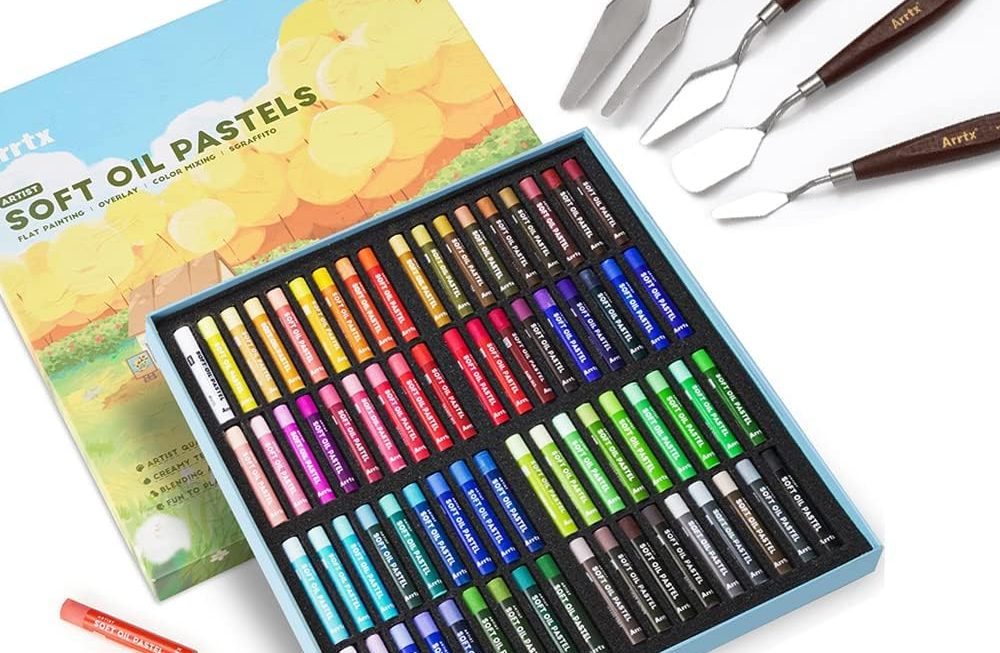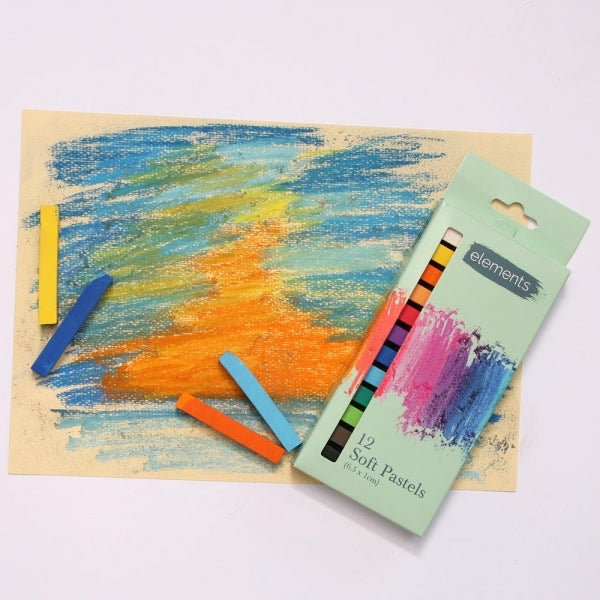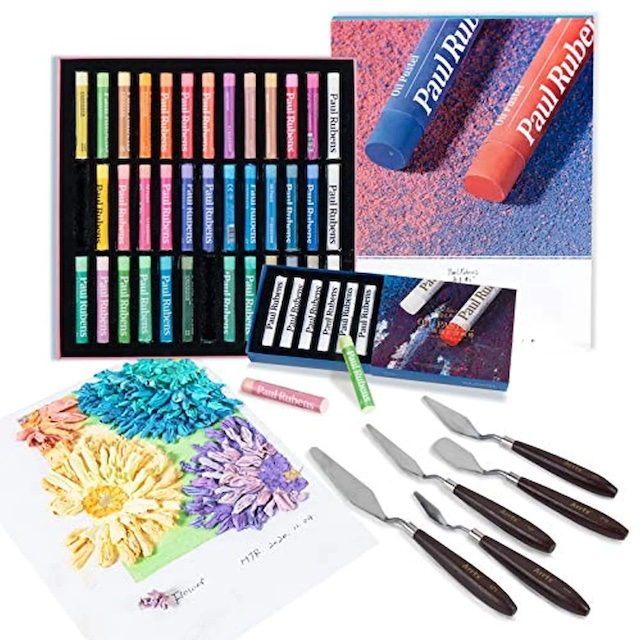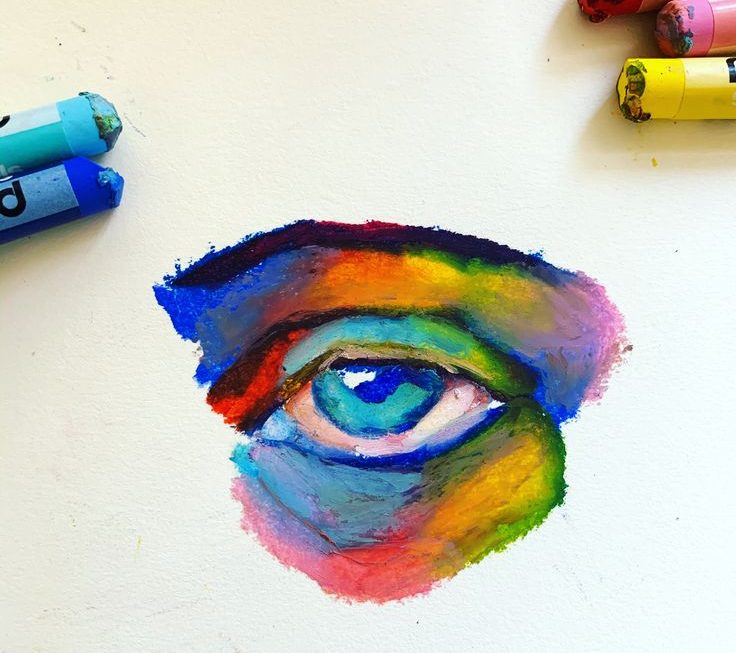Introduction
Pastels have been a beloved medium for artists for centuries. Their vibrant colors and versatile applications make them a popular choice for creating stunning pieces of art. Two of the most common types of pastels are soft pastels and oil pastels. While they may seem similar at first glance, there are actually significant differences between the two. In this article, we will explore the distinctive qualities of soft pastels and oil pastels, and delve into the unique characteristics of Soft Pastel vs Oil Pastel.
Part 1: Understanding Soft Pastels
Level 1: What are soft pastels?
Soft pastels are made from pure pigment mixed with a minimal amount of binder, usually gum arabic or gum tragacanth, which gives them a powdery texture. They are known for their vibrant colors and delicate, velvety finish when applied to paper.
Level 2: Characteristics of soft pastels
Soft pastels are favored for their ease of blending, allowing artists to create smooth transitions between colors. They are also suitable for creating fine details and intricate textures. However, because of their delicate nature, soft pastels require careful handling and are best used on textured paper to adhere properly.
Part 2: Exploring Oil Pastels
Level 1: What are oil pastels?
Oil pastels are made from pigment mixed with a non-drying oil and a wax binder, which gives them a creamy consistency. They are known for their vibrant colors and the ability to blend easily on various surfaces. And including paper, canvas, and wood.
Level 2: Characteristics of oil pastels
Unlike soft pastels, oil pastels do not require fixative to set the colors in place. Making them a more convenient option for artists. They are also more resistant to smudging and can be used on a wider range of surfaces. Additionally, oil pastels can be layered and scraped to create unique textures and effects.
Part 3: Application and Techniques in Soft Pastels
Level 1: Techniques for working with soft pastels
Soft pastels offer a range of techniques for artists to explore. This includes layering, blending, and creating textures through the use of tools such as brushes, sponges, and even fingers. Artists can also experiment with mixing and diluting the colors to achieve different effects.
Level 2: Soft pastel in different art forms
Soft pastels are commonly used in various art forms, including drawing, painting, and mixed media. Their versatility allows artists to create a wide range of effects, from delicate renderings to bold, expressive strokes.
Part 4: Application and Techniques in Oil Pastels
Level 1: Techniques for working with oil pastels
Oil pastels offer unique blending capabilities, allowing artists to create smooth, buttery textures and layer colors to achieve a painterly effect. They can also be used in conjunction with solvents to create washes and transparent layers, adding depth and complexity to the artwork.
Level 2: Oil pastel in different art forms
Oil pastels are used in a variety of art forms, including drawing, painting, and mixed media. They are particularly well-suited for creating bold, vibrant compositions with rich, saturated colors.
Part 5: Choosing the Right Medium for Your Artwork
Level 1: Considerations for choosing between soft pastels and oil pastels
When deciding between soft pastels and oil pastels, artists should consider the desired effect, surface, and overall aesthetic of their artwork. Additionally, factors such as the need for fixative, blending capabilities, and layering options should be taken into account.
Level 2: Experimenting and combining mediums
Many artists find that a combination of soft pastels and oil pastels can offer a unique and dynamic approach to their work. By experimenting with both mediums, artists can explore the different qualities of each and create diverse and visually captivating pieces of art.
Part 6: Blending and Layering Techniques in Soft Pastel
Soft pastels are known for their ease of blending and layering, making them a popular choice for artists who want to create smooth and seamless transitions of color. One of the most common blending techniques used with soft pastels is finger blending, where the artist uses their fingers to blend and smudge the colors together. This method allows for greater control and precision, enabling artists to create a wide range of effects, from subtle gradients to bold color transitions.
Another popular blending technique with soft pastels is the use of blending tools such as blending stumps or tortillons. These tools allow for more precise blending and can be especially useful when working on intricate details or small areas. Additionally, artists can also use a dry brush to blend soft pastels, creating a softer and more diffused effect.
When it comes to layering, soft pastels offer great versatility. Artists can build up multiple layers of color to achieve depth and richness in their artwork. This layering technique allows for greater flexibility in creating a wide range of textures and effects. By layering different colors, artists can create vibrant and dynamic compositions, adding depth and dimension to their artwork.
Overall, the blending and layering techniques available with soft pastels provide artists with endless creative possibilities. Whether creating delicate portraits, expressive landscapes, or abstract compositions. The versatility of soft pastels makes them a popular choice among artists of all skill levels.
Part 7: Blending and Layering Techniques in Oil Pastel
Oil pastels offer unique blending and layering techniques that set them apart from other traditional drawing mediums. Due to their wax and oil-based composition, oil pastels have a creamy consistency that allows for smooth and effortless blending. Artists can easily blend colors together using their fingers or blending tools to achieve a seamless transition of color.
One of the most popular blending techniques with oil pastels is the use of solvents such as mineral spirits or turpentine. By applying a small amount of solvent to the surface of the artwork, artists can achieve a more painterly effect, creating smooth and vibrant color transitions. This method is especially effective for creating bold and expressive artwork with a rich, saturated color palette.
In addition to blending, layering is another important technique in oil pastel art. Artists can build up multiple layers of color to create depth and texture in their artwork. The translucent nature of oil pastels allows for the underlying layers to show through, creating a luminous and vibrant quality to the artwork.
With their unique blending and layering capabilities, oil pastels offer artists a versatile and expressive medium for creating a wide range of artwork, from intricate details to bold, expressive strokes.
Part 8: Choosing the Right Pastel for Your Artistic Vision
Choosing between soft pastels and oil pastels ultimately comes down to the artist’s personal preferences and artistic vision. Both mediums offer their own unique qualities and techniques that can be utilized to create stunning artwork. Soft pastels are prized for their velvety texture, vibrant colors, and ease of blending, making them a popular choice for creating delicate and expressive artwork. On the other hand, oil pastels offer a creamy consistency, vibrant colors, and unique blending and layering techniques that lend themselves to bold and expressive artwork.
It’s important for artists to experiment with both mediums and discover which one best suits their artistic style and vision. Some artists may find that they prefer the versatility and flexibility of soft pastels, while others may be drawn to the bold and vibrant qualities of oil pastels. Ultimately, both mediums offer endless possibilities for creative expression, and artists can explore and combine different techniques to achieve their desired effects. Whether working with soft pastels, oil pastels, or a combination of both, artists can create captivating and dynamic artwork that showcases the unique qualities of each medium.
Conclusion
Soft Pastel vs Oil Pastel: Soft pastels and oil pastels each have their own distinctive qualities and applications. While soft pastels are known for their delicate blend of colors and detailed textures. The oil pastels offer vibrant, saturated hues and versatility on various surfaces. Understanding the differences between these two mediums and experimenting with their unique characteristics. Artists can expand their creative possibilities and elevate their artwork to new heights. Whether working with soft pastels, oil pastels, or a combination of both, the possibilities are truly limitless.






